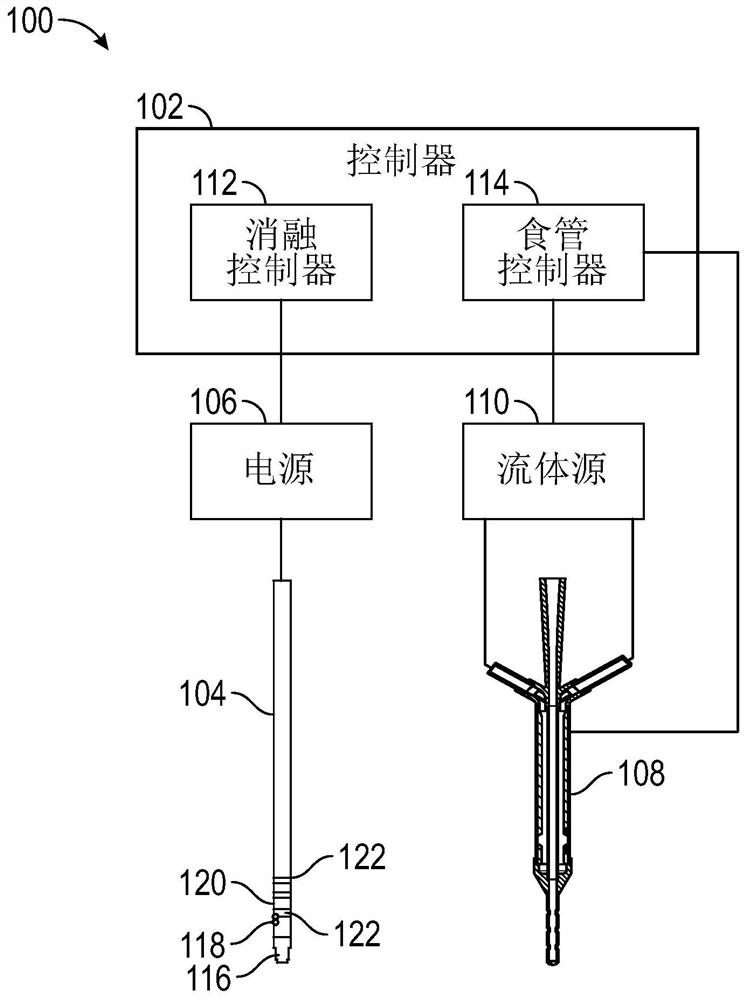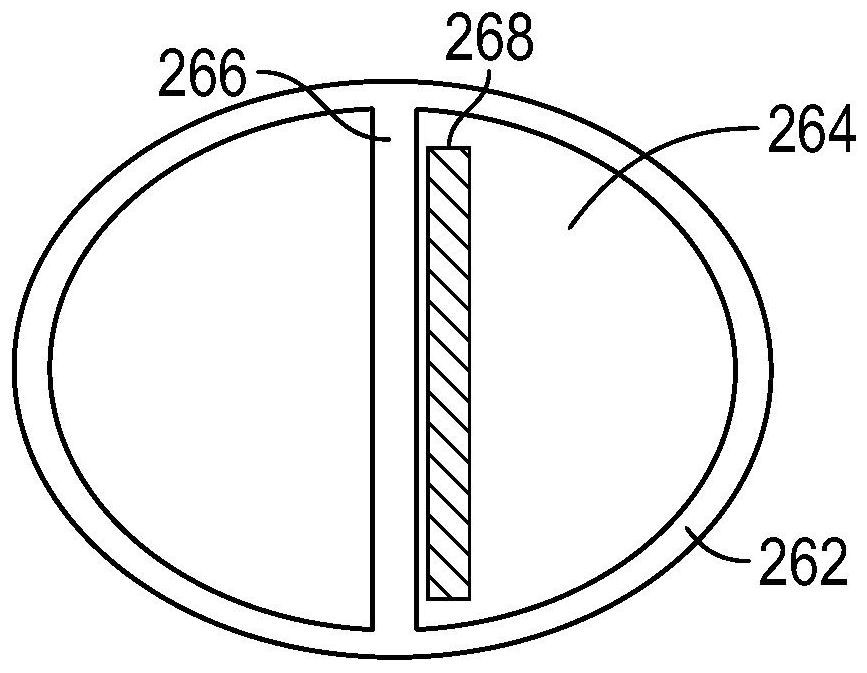Esophageal heat transfer devices and methods for cardiac tissue ablation
A technology for heart tissue and esophagus, applied in the field of esophageal heat transfer device, temperature management system, and esophageal tissue temperature, can solve the problems of not reducing the incidence of esophageal damage
- Summary
- Abstract
- Description
- Claims
- Application Information
AI Technical Summary
Problems solved by technology
Method used
Image
Examples
Embodiment 1
[0249] Example 1. Pig model
[0250] method
[0251] design. This prospective interventional study was conducted by an experienced team that included a practicing electrophysiologist and assistant professor of cardiology, and according to the U.S. Department of Preclinical Services, Minneapolis, Minnesota ( American Preclinical Services' Institutional Animal Care and Use Committee-approved protocol, with input and contributions from two other practicing electrophysiologists with university backgrounds. The methods used in this study are consistent with current veterinary and United States Department of Agriculture (USDA) standards and employ state-of-the-art animal care internationally recognized by the Association for Assessment and Accreditation of Laboratory Animal Care room. Animals were cared for and handled in accordance with Office of Laboratory Animal Welfare guidelines for the human care and use of animals and in compliance with the USDA Animal Welfare Act, 9CFR Pa...
Embodiment 2
[0272] A robust mathematical model was derived to describe the effects seen in the above experiments to establish a framework from which to guide further analysis and development of this novel esophageal protection strategy.
[0273] A two-dimensional model of the esophageal injury was established using mathematical modeling software. The model was compared with experimentally derived data from the animal model described above by applying RF energy directly to the exposed esophagus.
[0274] The modeling governing equations utilize mass, momentum, and energy balances under boundary conditions defined by experimental values for the temperature of the ablation catheter tip, cooling water, and animal patient. Other inputs are the heat capacity, density and thermal conductivity of the esophagus and cooling device walls, and the dynamic viscosity and specific heat ratio of the water domain.
[0275] RF ablation is applied using two electrodes: one electrode corresponds to a cath...
Embodiment 3
[0324] Example 3. Esophageal protection during radiofrequency ablation
[0325] The results presented below demonstrate that cooling fluid temperature can be adjusted for specific RF ablation parameters to ensure desired ablation of myocardial tissue while protecting esophageal tissue from thermal injury.
PUM
 Login to View More
Login to View More Abstract
Description
Claims
Application Information
 Login to View More
Login to View More - R&D
- Intellectual Property
- Life Sciences
- Materials
- Tech Scout
- Unparalleled Data Quality
- Higher Quality Content
- 60% Fewer Hallucinations
Browse by: Latest US Patents, China's latest patents, Technical Efficacy Thesaurus, Application Domain, Technology Topic, Popular Technical Reports.
© 2025 PatSnap. All rights reserved.Legal|Privacy policy|Modern Slavery Act Transparency Statement|Sitemap|About US| Contact US: help@patsnap.com



